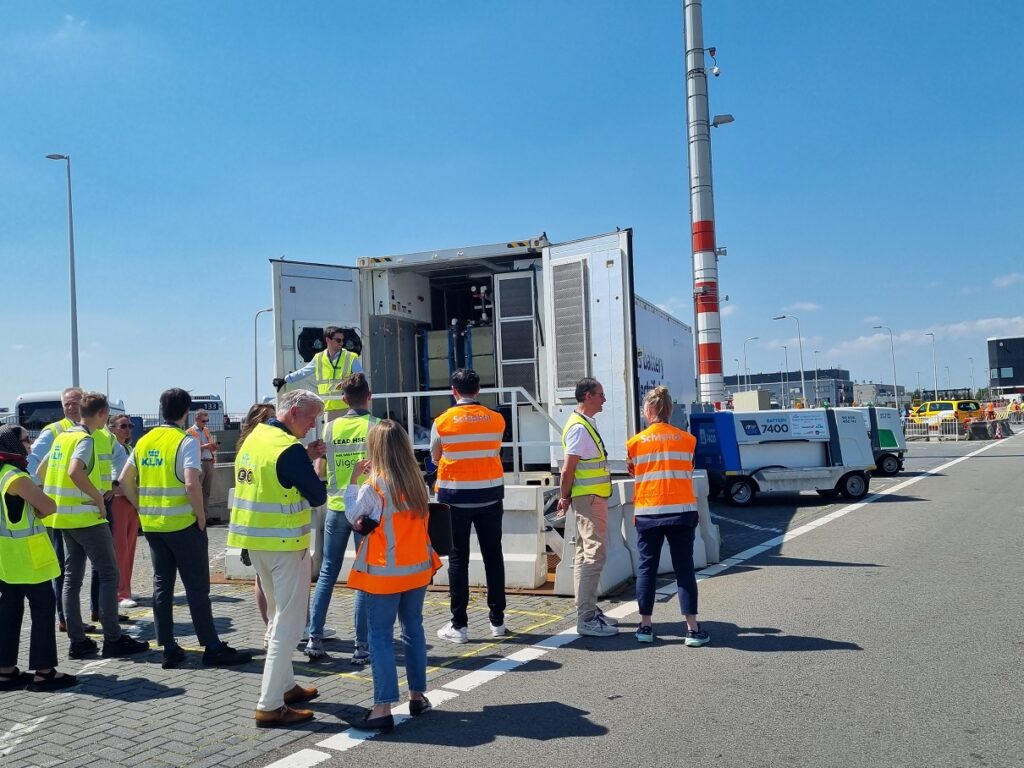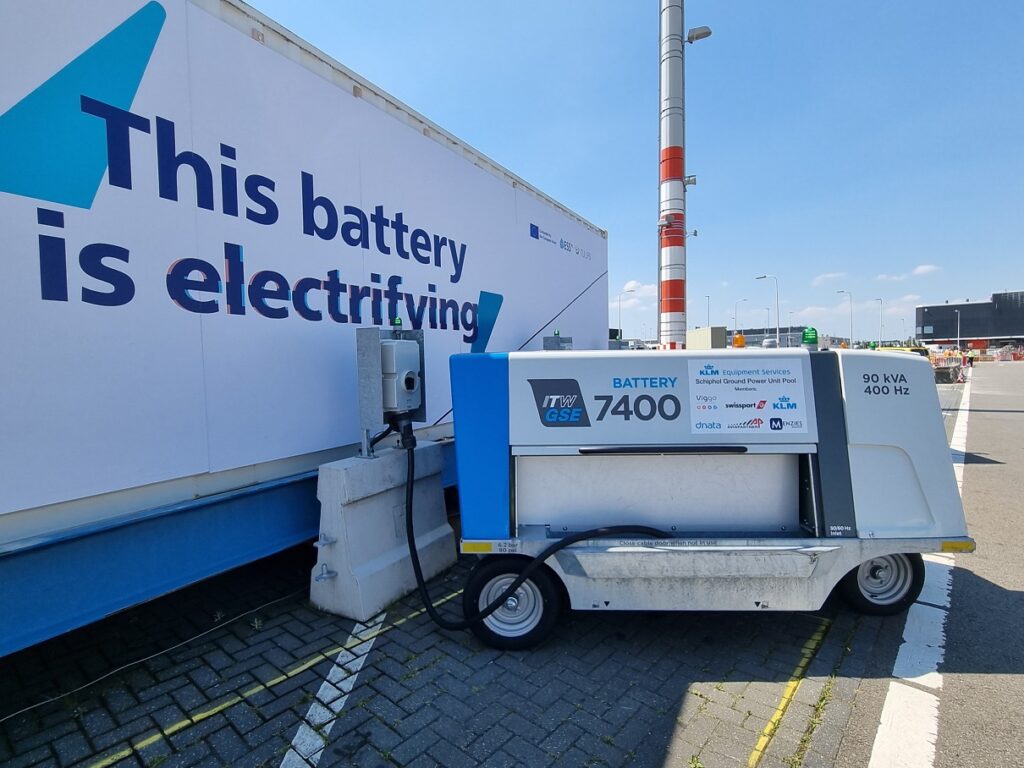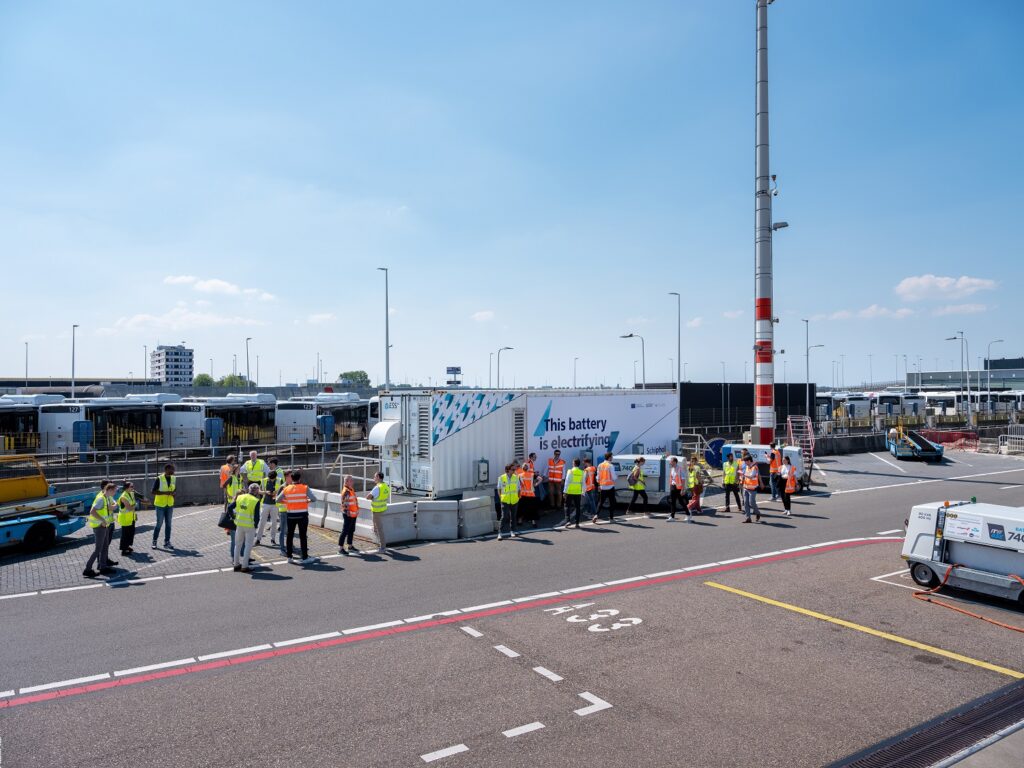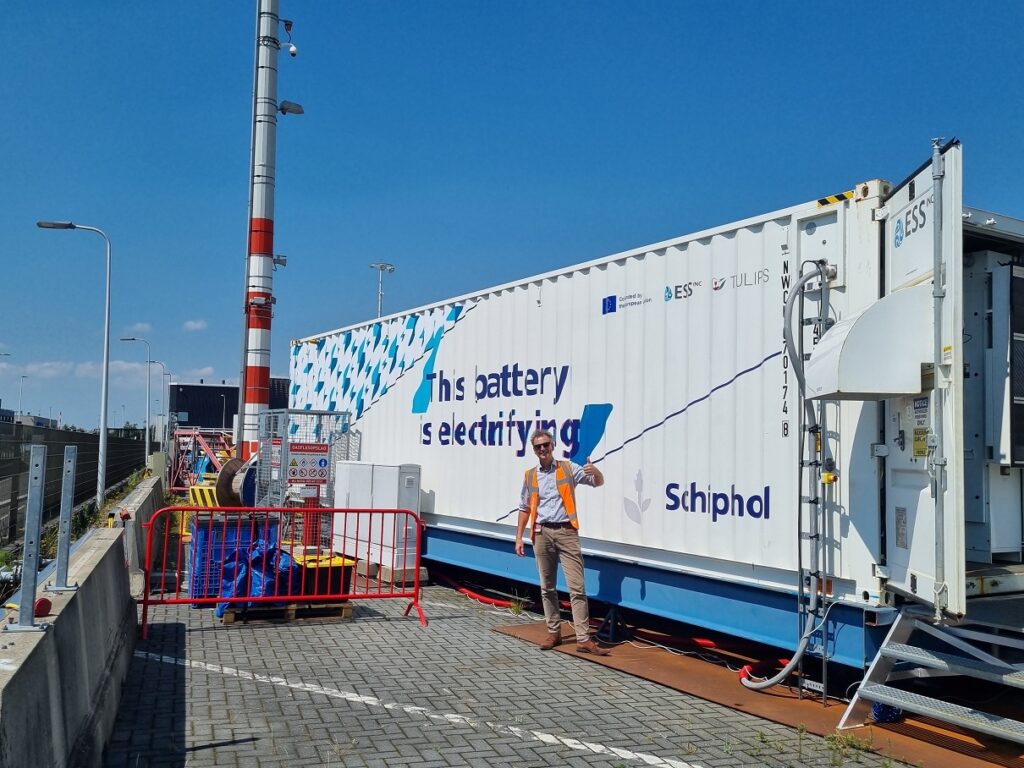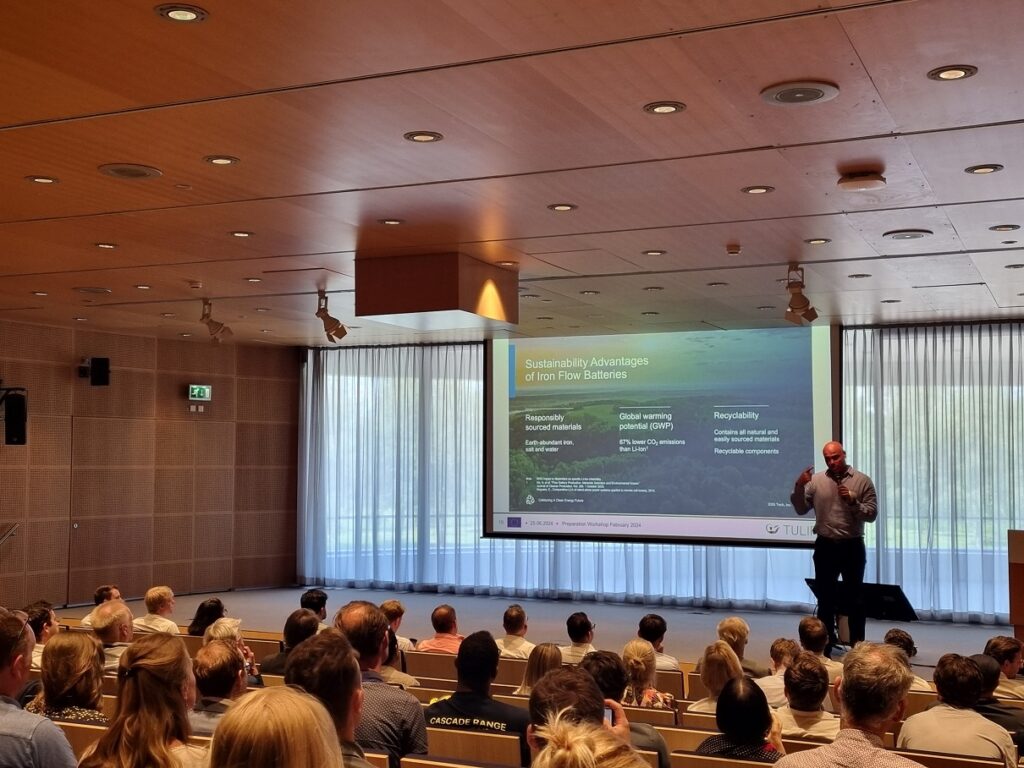June 2024
On June 25, we hosted a diverse group of sister airports and partners at Amsterdam Airport Schiphol. The occasion was a demonstration and explanation of two groundbreaking innovations that TULIPS has been developing since the programme’s inception: the Iron Flow Battery and the Hydrogen Ground Power Unit (H2-GPU). The Iron Flow Battery is already operational, while the H2-GPU is scheduled for upcoming tests.
Collaboration and Complexity
Sybren Hahn, Schiphol’s Executive Director of Infrastructure, opened the meeting by commending the results and collaborative efforts. He emphasized the complexity of these innovations and highlighted the challenge of implementation. However, by uniting as partners, our groundbreaking solutions can take flight. Sustainable airport operations are integral to Schiphol’s mission, and the Iron Flow Battery and H2-GPU play a crucial role in reducing emissions and enhancing air quality on the apron.
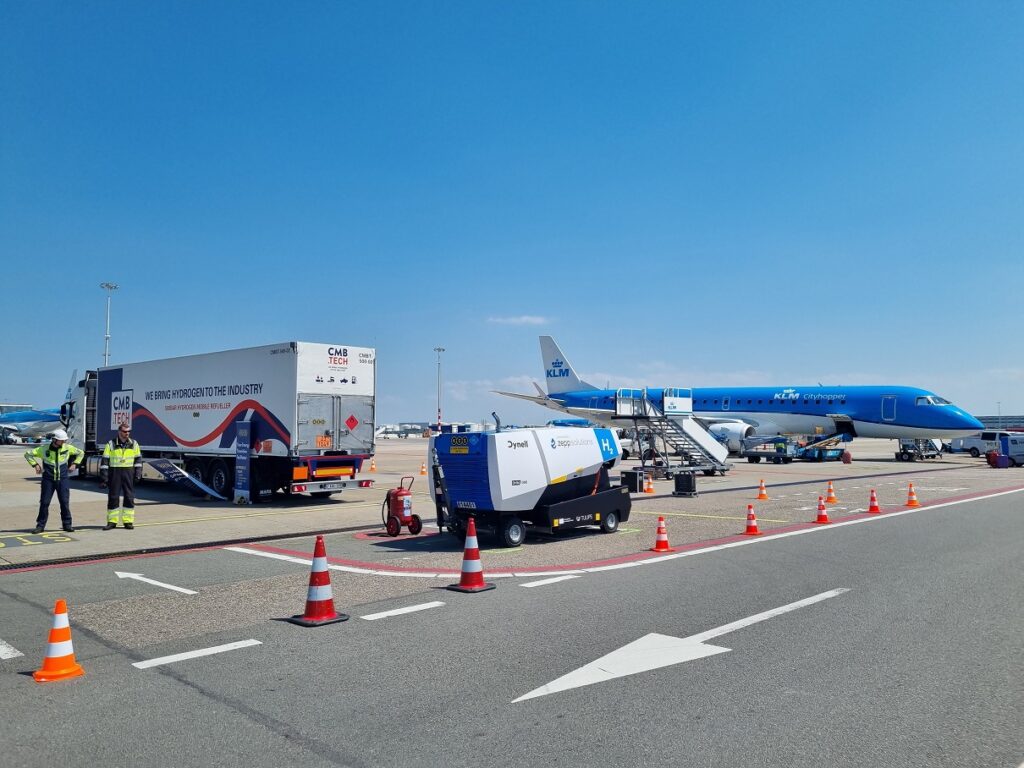
Partner Contributions
During the event, TULIPS partners shared insights into their contributions. ESS and Schneider Electrics were pivotal in developing the Iron Flow Battery, while Dynell and Zepp.Solutions contributed to the H2-GPU. On-site, KES colleagues demonstrated the Iron Flow Battery in action and showcased the refueling process for the H2-GPU using a specialised hydrogen refueling truck.
Looking Ahead
We extend our heartfelt gratitude to all partners who turned these innovations into reality. Stay tuned for further updates and lessons learned during the TULIPS Progress Event on October 10 in Turin.
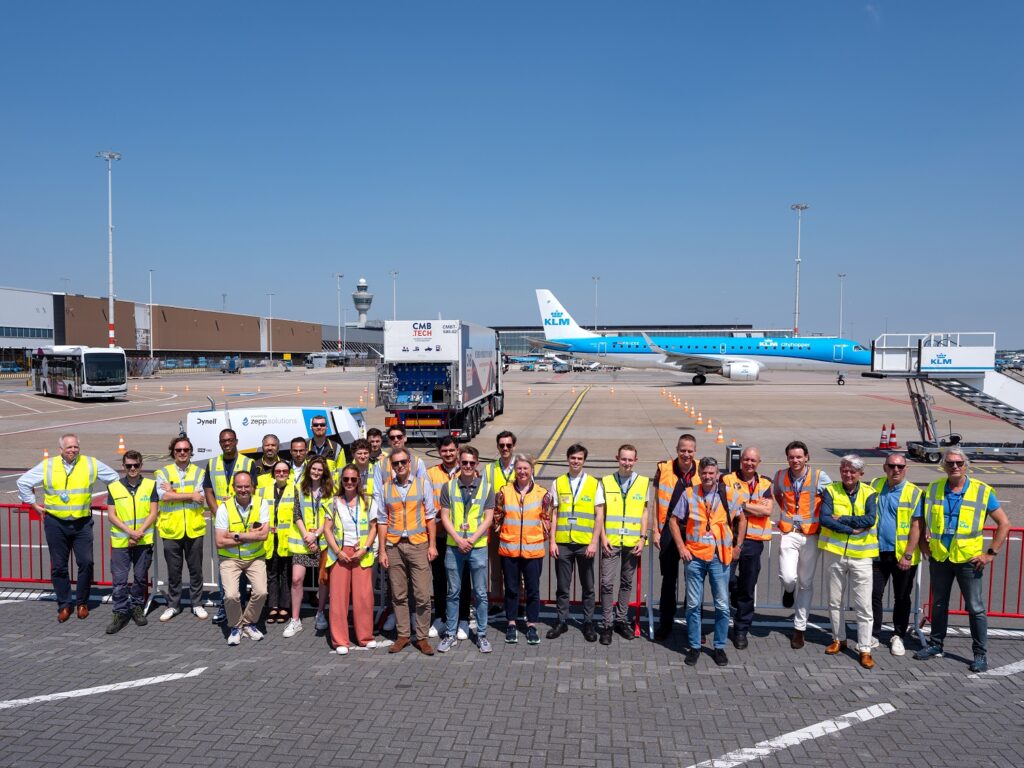

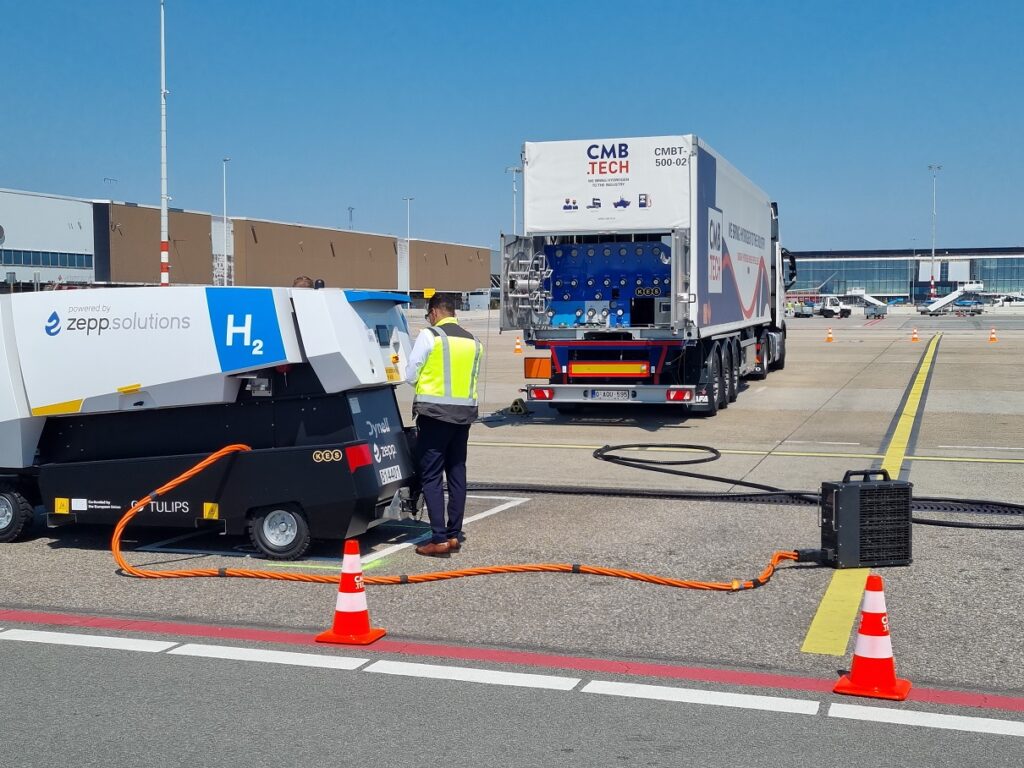
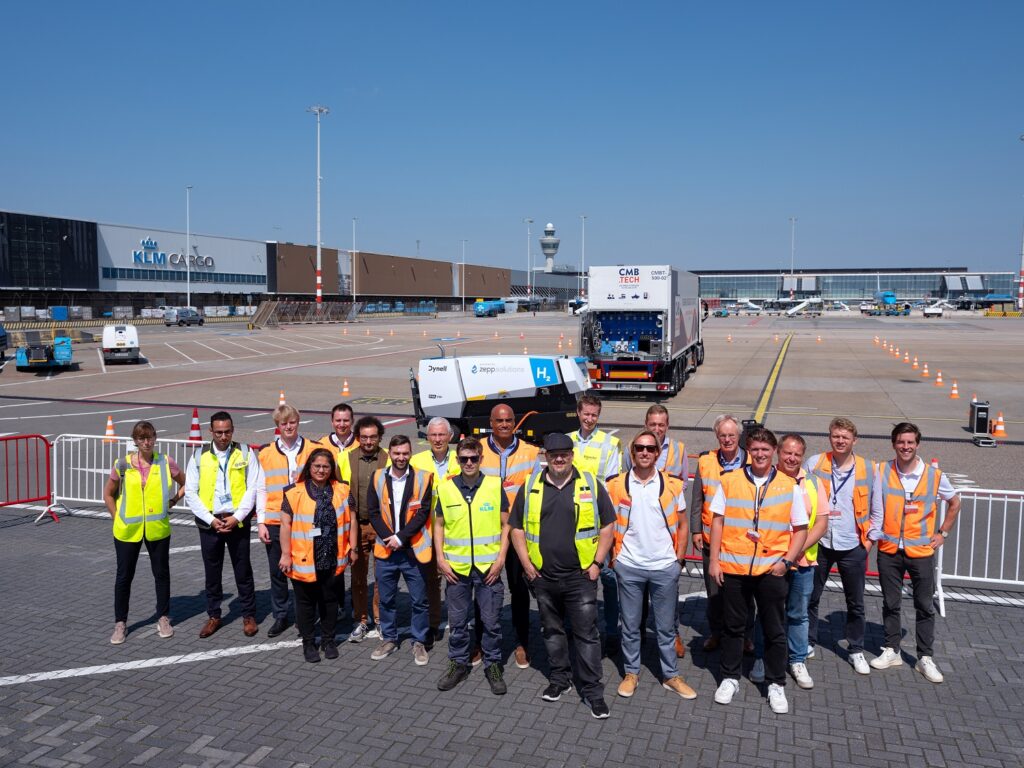
More information on the Iron Flow Battery and H2-GPU
The Iron Flow Battery is currently used on Schiphol to provide charging facilities at remote stands where Schiphol is not able to charge heavy electrical equipment such as E-GPU’s. It is a sustainable energy storage solution that can help airports to overcome grid congestion and work towards a smart energy hub. Read Schiphol’s press release on the IFB.
The Hydrogen GPU on the other hand is a different solution to ban out emissions on airside. The usage of hydrogen could possibly help to phase out the emissions on airside for either vehicles that are not yet electric or for remote stands where the grid is congested and thus charging facilities are not available. Read the TULIPS article on the H2-GPU.
